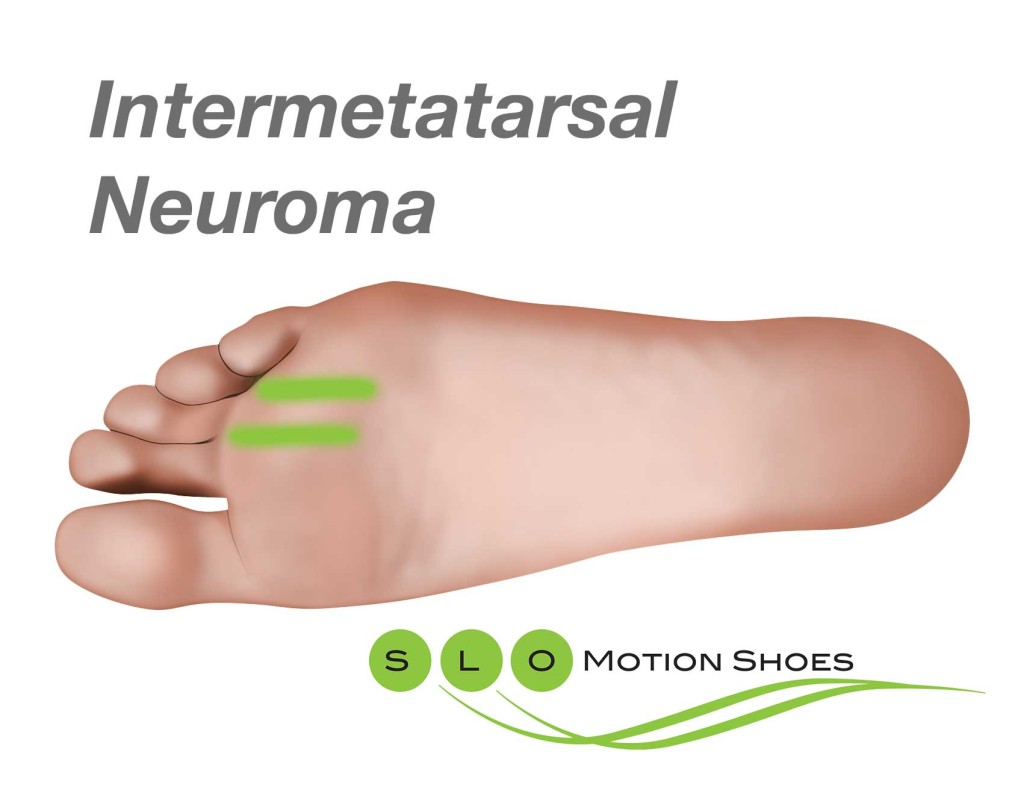
A neuroma is a localized degenerative process within a nerve caused by repetitive low-grade nerve trauma. The repetitive trauma causes swelling within the nerve and the development of subsequent scar tissue. The most common neuroma occurs between the metatarsal bones of the foot and is termed intermetatarsal neuroma. The nerves that supply skin sensation between the second through the fourth toes are most commonly involved.
Increased motion and friction between the metatarsal bones causing impingement, direct pressure on the nerve during walking as well as the independent up and down motion of the metatarsals causing shear can all be attributed to the development of this condition.
The type of symptoms encountered can be varied and may include; sharp, shooting, stabbing or burning pain, numbness, tingling or cramping sensations located on the ball of the feet extending into the toes. The most common area involved is between the third and fourth metatarsals and less commonly between the second and third metatarsals.
Shoe and orthotic therapy as well as the cautious use of anti-inflammatory medications including cortisone are traditionally recommended treatment. Other conservative treatments including the use of dilute alcohol injections have been shown to be helpful in decreasing the pain associated with the intermetatarsal neuroma.
Conservative therapies are successful a majority of the time in relieving pain and allowing the return to all normal daily activities. If pain is ongoing despite these conservative therapies surgical treatment may be indicated.







